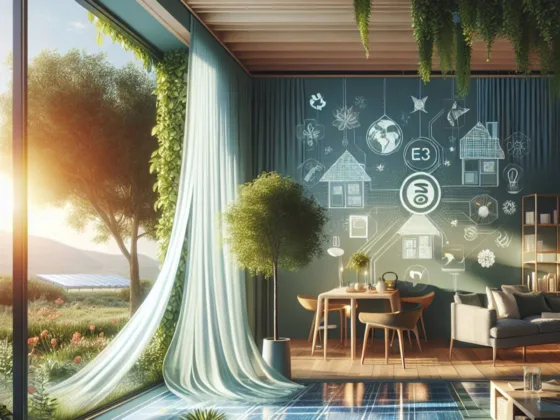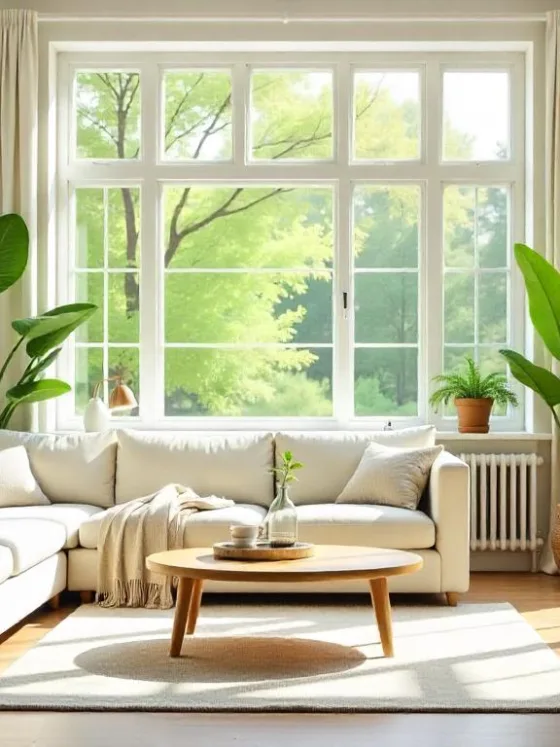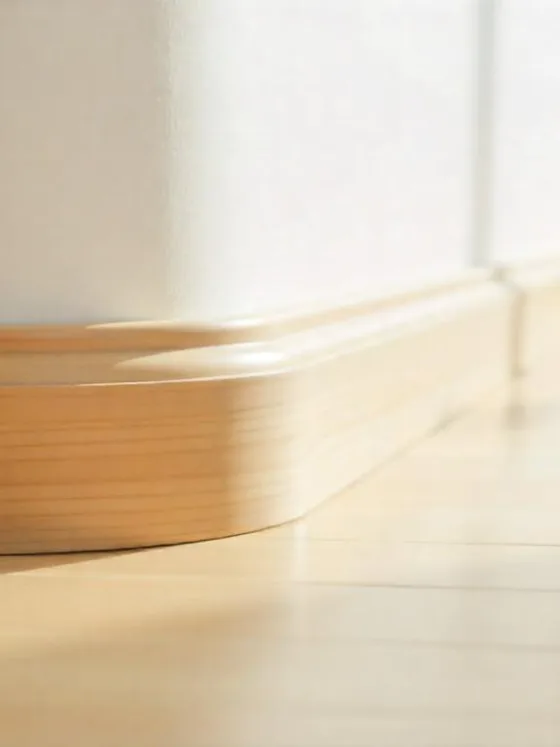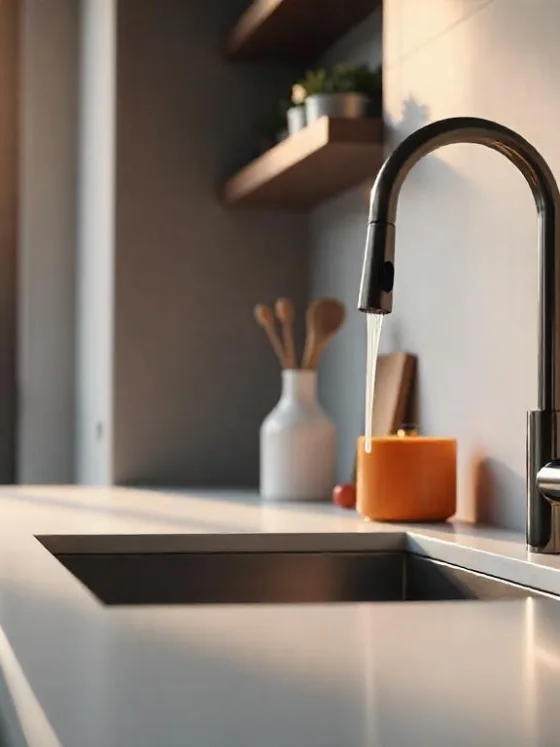Table of Contents Show
When it comes to interior design, few styles are as iconic and enduring as Scandinavian design. This Nordic contemporary style is known for its minimalist approach, functional design, and focus on natural elements.
The use of a neutral color palette, including shades of white, beige, and light gray, is a hallmark of Scandinavian interior design. These neutral colors help reflect natural light, making your living room feel spacious and filled with warmth. Scandinavian design also emphasizes the use of natural materials and cozy textures to create a comfortable environment.
From fluffy rugs to wooden furniture, these elements add a touch of coziness to the minimalist design. Additionally, lighting plays a crucial role in this style. Candles are often used in Scandinavian homes to enhance the feeling of hygge – a Danish concept that encapsulates the feeling of cozy contentment and well-being.
Moreover, traditional elements in design like heirlooms or pieces that reflect family history can be seamlessly integrated into the Scandinavian aesthetic. This adds a personal touch to your living room and makes it truly unique.
In essence, by adopting a minimalist approach and incorporating elements like natural light, texture, materials, and personal touches into your home decor, you can achieve an authentic Scandinavian interior design that exudes coziness.
In this blog post, we will guide you through the key elements of Scandinavian design and provide tips on how to incorporate them into your own living room.
1. Light Colors and Natural Light
Scandinavian design is rooted in the principle of creating bright, airy spaces that reflect the serenity of the Nordic landscapes. A key feature that stands out is the use of light colors and an abundance of natural light to create a soothing atmosphere that mirrors the calm of these regions.
When aiming for a Scandinavian-inspired living room, your first step should be to embrace neutral tones. The color palette of a room can greatly influence its overall vibe and aesthetic appeal. For the Scandinavian style, less is more — think simplicity and functionality.
Start by hiring an interior house painter and have your walls painted with light, neutral colors. This could be:
- Crisp white
- Soft beige
- Light gray
These shades aren’t chosen merely for their minimalist charm. They also carry functional benefits that make them ideal for achieving the brightness and tranquility associated with Scandinavian design.
Reflective Qualities
Neutral tones are known for their excellent light-reflecting qualities. The lighter the color of your walls, the more natural light they’ll reflect. This can help to:
- Maximize daylight: By reflecting sunlight, these colors can make the most of the daylight hours, keeping your living room bright and sunny.
- Enhance artificial lighting: Even after sunset, light-colored walls can enhance the effect of indoor lighting fixtures.
Spaciousness and Serenity
A palette of neutral tones can also give your living room a more spacious look and feel. Light colors tend to recede visually, making rooms appear larger than they actually are.
Additionally, neutral hues provide a serene backdrop that allows other elements of your interior design — like furniture, artwork, or personal mementos — to take center stage.
Remember, in Scandinavian design, it’s all about creating functional spaces that exude calm and coziness. Choosing the right colors is an important first step in this process.
Interesting Fact: White is often considered the most popular color in Scandinavian interiors due to its ability to create a clean and airy atmosphere, mimicking the snow-covered landscapes common in Nordic countries.
Maximize Natural Light
Natural light plays a significant role in Scandinavian design. It not only enhances the mood and well-being of the inhabitants but also contributes to crafting a cozy and inviting living room.
To maximize the natural light in your living room, consider these tips:
- Choose light and sheer curtains that allow the sunlight to filter through, or opt for no curtains at all if privacy allows.
- Strategically place mirrors on walls or furniture to bounce the light around the room and create an illusion of depth.
- Avoid cluttering windowsills and other surfaces with too many objects that might block the light.
- Opt for light wood furniture, such as pine, birch, or oak. These woods have a natural warm tone that complements the light colors of walls and floors.
Add Pops of Color
While Scandinavian design primarily uses neutral tones, adding pops of color can bring vitality to your space. Consider using accessories like cushions, rugs, plants, or artwork that contrast with the light background for visual interest.
You can also introduce some darker colors like black, navy, or brown to create balance and contrast. However, remember the golden rule – simplicity is key. So avoid using too many colors or patterns as they might overwhelm the space and disrupt its serene aura.
Embrace the beauty of less to achieve a peaceful, serene living room that is both functional and stylish, embodying the essence of Scandinavian design. Renowned for its clean lines, ample space, and minimalist appeal, this Nordic aesthetic encourages you to keep things simple yet impactful.
Why Opt for Minimalism?
Minimalism isn’t just about having fewer items – it’s an intentional choice to live with less to make room for what truly matters. In the context of your living room, this translates into selecting furniture and decor that serves a purpose while adding aesthetic value. By avoiding unnecessary clutter, you can create a space that exudes calmness and serenity, where every item has its place and purpose.
The journey towards a minimalist living room starts with a clear understanding of what adds value to your space and what doesn’t. Here’s how you can achieve this:
Keep Only Essential Items:
The first step is to declutter your living room. This involves scrutinizing every item in the space and asking yourself whether it serves a practical purpose or enhances the aesthetics of your room. If it does neither, it’s time to let it go. This process might involve removing extra furniture pieces that crowd the room, getting rid of excessive decorations that distract from the harmony of the space, or eliminating appliances that are rarely used.
Always remember: In minimalist design, less is more. Each piece in your room should contribute to its overall sense of peace and balance.
Choose Functional Furniture:
The furniture you choose for your minimalist living room should strike a balance between aesthetic appeal and functionality. Look for pieces that serve multiple purposes, which can help reduce clutter. For instance, a coffee table with storage compartments can hold magazines or remotes, while sofas with built-in compartments provide extra space for blankets or pillows.
Incorporate Effective Storage Solutions:
A key aspect of minimalism is keeping your spaces tidy and organized, which can be achieved through smart storage solutions. Consider using storage ottomans that can double as seating or footrests, baskets under coffee tables for organizing books or toys, and floating shelves on walls to display art pieces or plants elegantly, without taking up floor space.
Maximize Open Spaces:
One of the hallmarks of Scandinavian design is the appreciation for open spaces. Ensure there is plenty of breathing room in your living room by spacing out furniture appropriately and not crowding the area with too many items. Also, consider using vertical space effectively – high shelves or tall standing lamps can draw the eye upward and make the room feel more spacious.
Pro Tip: Use mirrors strategically to reflect light and create the illusion of a larger space.
The key takeaway here is that a minimalist lifestyle doesn’t mean you have to sacrifice comfort or personal style. It’s not about living in a bare, impersonal space. Instead, it’s about creating an environment that aligns with your values and enhances your sense of well-being. With Scandinavian minimalism, you can achieve a living room design that is both simple in its form and beautifully serene in its essence.
3. Cozy Textures and Natural Materials
One of the defining characteristics of Scandinavian design is the use of cozy textures and natural materials. This not only contributes to the aesthetic appeal of the living room but also adds a sense of comfort and warmth.
Soft Textiles
Create a cozy ambiance by incorporating soft textiles into your design. These could include:
- Wool or sheepskin rugs: These add an instant cozy factor to your living room, offering both warmth and style.
- Knitted blankets: Aside from their functionality in providing warmth, knitted blankets can serve as a stylish accessory draped over your sofa or armchair.
- Plush cushions: A quick and easy way to add texture and comfort to your living room. Mix and match different textures for a more visually interesting space.
In every aspect, Scandinavian design is deeply rooted in the principles of simplicity, minimalism, and functionality. It is a design philosophy that emphasizes the harmony between form and function, with a significant emphasis on nature-inspired elements. This core principle extends to the selection of materials used in furniture design.
When selecting furniture pieces for a living room inspired by Scandinavian design, always lean towards those made from natural materials. The authentic appeal of natural materials such as wood or leather not only enhances the aesthetic value of your space but also imbues it with a sense of grounding and connection to nature.
Wood
Wood is a favorite material in Scandinavian design. Its timeless appeal, versatility, and durability make it an ideal choice for living room furniture:
- Durability: Wooden furniture stands the test of time. It’s sturdy and resistant, ensuring your pieces will last for years.
- Versatility: Its natural beauty easily complements other elements in your living room. You can mix and match different types and shades of wood without clashing.
- Warmth: Wood adds a warm touch to your living room, creating an inviting atmosphere.
Leather
Leather is another popular choice in Scandinavian interiors:
- Long-lasting: Like wood, leather is incredibly durable. With proper care, leather furniture can last for decades.
- Sophisticated: Leather adds an element of sophistication to your living room. It’s also very versatile – black or brown leather can suit almost any color palette.
- Comfortable: Leather is comfortable and gets even more so over time. It adapts to body temperature quickly making it cozy during winter and cool during summer.
Choosing natural materials for your furniture not only aligns with the principles of Scandinavian design but also guarantees you get pieces that are durable, elegant, and add character to your living room.
Renowned for its perfect blend of functionality and elegance, Scandinavian design offers a unique approach to furnishing your living room. Here are the key elements to focus on when selecting Scandinavian furniture:
Practicality
Scandinavian design is inherently utilitarian, with each piece often serving more than one function. As such, look for furniture that provides additional benefits beyond its primary function. For instance:
- A sofa with built-in storage compartments can save space and help declutter your living room.
- An ottoman that doubles as a coffee table provides an extra surface for setting down drinks or displaying decor pieces.
Remember, a true Scandinavian living room is both functional and stylish.
Aesthetics
The aesthetics of Scandinavian furniture align with the minimalist approach this style is known for. When choosing sofas, armchairs, or tables, consider these features:
- Clean lines: Avoid ornate or overly complex designs. The simpler the structure, the better.
- Simple designs: Look for furnishings with uncomplicated yet attractive designs that showcase Scandinavian simplicity.
- Neutral colors: Stick to furniture in neutral hues like white, beige, grey, or light wood tones that embody the calming and serene ambiance of Scandinavian interiors.
Statement Piece
Every Scandinavian living room should have at least one statement piece—a focal point that ties everything together. This could be a uniquely designed coffee table, a sleek storage cabinet, or even an eye-catching rug.
Fun fact: In Scandinavian design, statement pieces often carry a story or reflect personal tastes, adding depth to the overall aesthetic.
By sticking to these principles—practicality, aesthetics, and having a statement piece—you’re setting yourself up for success in creating not just a beautifully designed living room but one that’s also functional and comfortable. The right mix of cozy textiles, natural materials, and Scandinavian furniture will give your living room that stylish, inviting, and unmistakably Scandinavian appeal.
5. Greenery and Natural Elements
One of the key features to creating a truly Scandinavian-inspired living room is introducing greenery and natural elements into your space. This design aesthetic is deeply rooted in nature, with a strong emphasis on bringing the outside in for a fresh, organic feel.
Incorporate Plants
Plants are a simple yet effective way to breathe life into your living room. They not only improve indoor air quality, but their vibrant green hues also add a splash of color that perfectly complements the neutral tones typical of Scandinavian design.
Consider placing potted plants or fresh flowers in strategic locations such as:
- On coffee tables or side tables
- In windowsills
- On bookshelves or built-in shelves
- On floor-standing planters
Choose plants that thrive in indoor conditions like snake plants, peace lilies, or spider plants for easy maintenance.
Natural Elements as Decor
Besides plants, there are other ways you can incorporate natural elements into your living room. Think about using materials like wood and stone that are not only aesthetically pleasing but also bring different textures into your space.
Here are some suggestions:
- Wooden Bowls: A beautifully crafted wooden bowl can serve as an excellent centerpiece on your coffee table or dining table.
- Stone Sculptures: These can add an artistic touch to your living space. Look for pieces with minimalist designs to keep up with the Scandinavian theme.
- Natural Fiber Rugs: Consider rugs made from jute or wool to add warmth and texture underfoot.
Remember, less is more in Scandinavian design. So even though you’re adding elements, aim to create a sense of balance and harmony rather than clutter. The goal is to build a living room that feels inviting, cozy, and connected with nature.
A fundamental component of Scandinavian design is well-planned lighting. This style is all about creating a space that feels warm, inviting, and filled with a sense of ‘hygge’. In the long, dark winters of Scandinavia, light plays a pivotal role in enhancing the mood and overall aesthetics of the living room. Therefore, your choice of lighting arrangement can make or break your Scandinavian-style living room.
Multiple Light Sources
Opting for multiple light sources will help you to create an atmosphere that’s both warm and inviting. This approach allows you to control the intensity and focus of lighting based on the time of day, season, or your personal preference. Here are some types to consider:
- Pendant Lights: These are commonly used over dining tables or as a statement piece in the center of your living room. Choose one with a sleek, minimalist design that complements your color scheme.
- Floor Lamps: Strategically placed floor lamps can illuminate darker corners while adding a stylish element to your décor. Look for ones with adjustable features so you can direct light where it’s needed.
- Table Lamps: A perfect addition to side tables or shelves. These lamps provide focused light that’s ideal for reading or other activities.
Harnessing Natural Light
In a Scandinavian-inspired space, natural light plays a pivotal role. Large, clear windows—preferably without heavy, obstructive curtains—are a typical feature of this design style. They allow an abundance of sunlight to stream into your living room during daylight hours, creating an airy and open atmosphere.
This influx of natural light does more than merely brighten up your room; it also amplifies the sense of space within the room. In addition, it accentuates the simplicity and elegance of the minimalist decor, making each piece stand out.
Pro Tip: Use light, translucent curtains or blinds if you need to control the amount of light coming in or ensure privacy. These will diffuse the sunlight while maintaining a bright and spacious feel.
The Role of Candles
Candles hold much more than a decorative function in Scandinavian interior décor—they are an integral part of imbuing your living room with the cozy and intimate ambiance synonymous with hygge, a Danish term for a mood of coziness and comfortable conviviality.
The soft and flickering glow from candles introduces warmth into your space, crafting a homey feel that’s perfect for winding down after a long day or enjoying quiet evenings.
Depending on your preferences, you can choose:
- Scented Candles: These not only provide gentle illumination but also infuse your living room with pleasant aromas. From refreshing citrus scents to calming lavender, select one that complements the mood you’re aiming to create.
- Pillar Candles: With their longer burn time, pillar candles are ideal if you want to maintain a cozy atmosphere for extended periods.
Ensure to place your candles safely—away from any flammable materials—and consider using candle holders for added safety and aesthetic value. And remember: when it comes to Scandinavian design, ‘less is more’. A few strategically placed candles can often have a greater visual impact than cluttering the space with too many.
In summary, lighting in Scandinavian design extends beyond simple illumination. It’s about setting a mood that invites comfort and encourages relaxation. So be thoughtful with your lighting choices and arrangements to curate the perfect Scandinavian living room.
7. Personal Touches and the Essence of Hygge
In the final steps of creating your Scandinavian-inspired living room, it’s important to incorporate personal touches that reflect your unique identity.
Showcasing Personal Mementos
Thoughtfully display cherished items such as meaningful artwork, family photos, or beloved mementos. These elements help to make your space feel more personal and lived-in. They tell your story and add a layer of depth to the minimalist Scandinavian design. Remember, these items should be displayed in a way that aligns with the ‘less is more’ principle — aim for meaningful curation over clutter.
Note: Simplicity doesn’t imply lack of personality or style. On the contrary, a well-curated collection of personal items can enhance the overall aesthetic appeal while simultaneously making your living room feel uniquely yours.
Embracing Hygge: The Art of Cozy Contentment
Embrace the Danish concept of “hygge” (pronounced hoo-ga), which encapsulates the idea of creating a warm, cozy, and contented atmosphere. This integral aspect of Scandinavian culture is all about enjoying life’s simple pleasures. Here are some ways you can integrate hygge into your living room:
- Light a Fire: If you have a fireplace, light it up to infuse your room with warmth and create an inviting ambiance.
- Enjoy Warm Drinks: A cup of hot cocoa or tea can add to your sense of comfort and relaxation.
- Use Comfortable Textiles: Snuggle up with soft blankets and plush pillows for the ultimate hygge experience.
By consciously integrating these elements into your living room design, you’ll create an environment that embodies both style and comfort — the very essence of Scandinavian decor.
As you embark on this interior design journey, remember that the key to achieving the Scandinavian look lies in simplicity, functionality, and the use of natural materials. So, get inspired, unleash your creativity, and begin transforming your living room into a Scandinavian sanctuary.
FAQs (Frequently Asked Questions)
To create a cozy and inviting living room with Scandinavian design elements, you can start by incorporating light colors and maximizing natural light. Embrace neutral tones, minimalism, cozy textures, and natural materials. Additionally, consider adding pops of color, greenery, and multiple light sources to master lighting in your space.
The key elements of Scandinavian design for a living room include light colors, natural light, neutral tones, minimalism, decluttering, cozy textures, natural materials, Scandinavian furniture, greenery, lighting, candles, and personal touches embracing the concept of hygge.
Minimalism is important in Scandinavian design because it promotes a peaceful and serene living environment. It’s not just about having fewer items; it’s an intentional choice to focus on essentials and decluttering to create a harmonious space.
Natural materials play a significant role in Scandinavian design as they contribute to the cozy ambiance and timeless elegance of the space. Soft textiles, wood, and leather are commonly used to enhance the warmth and authenticity of the interior.
You can incorporate personal touches in your Scandinavian-inspired living room by showcasing meaningful items such as artwork or mementos. Embracing the concept of hygge also adds a sense of cozy contentment to the space.
In Scandinavian design, lighting plays a pivotal role in creating a well-planned and harmonious atmosphere. Opting for multiple light sources and harnessing natural light are essential components. Candles also hold more than a decorative function as they contribute to the overall ambiance.










